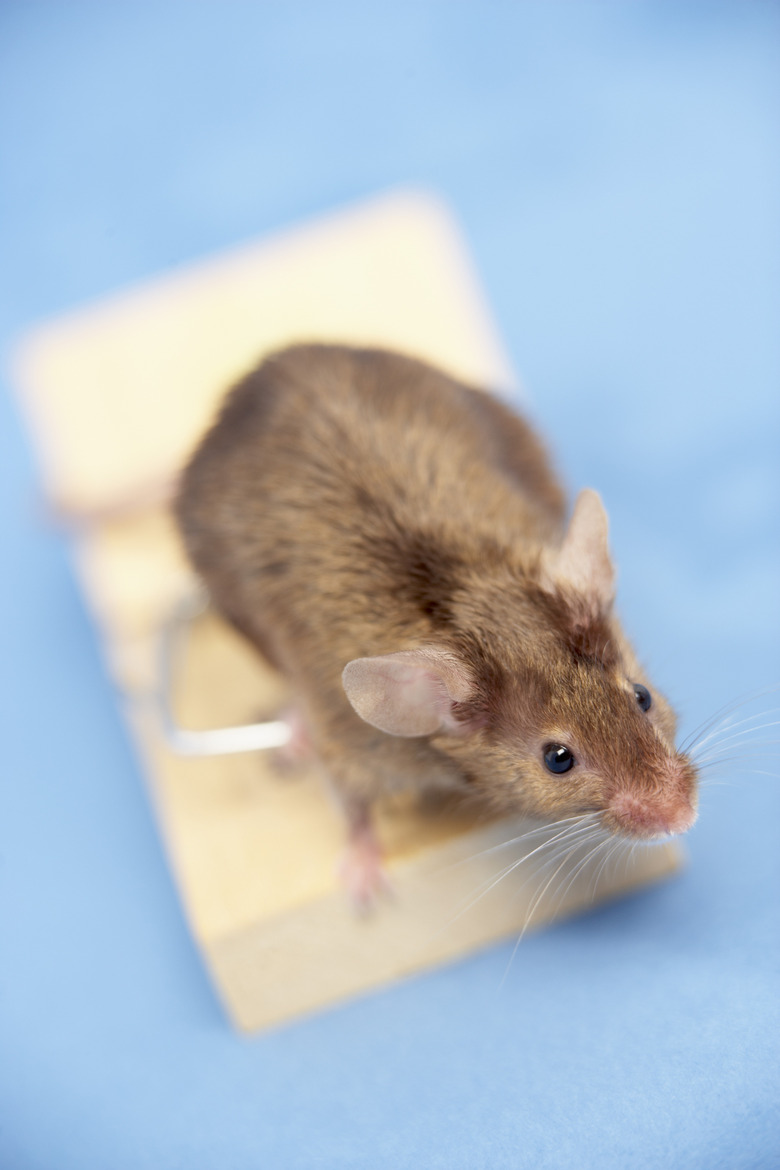How To Get Rid Of Mice Nests In My Shed
Things Needed
- Trash can
- Broom
- Dust pan
- Bucket
- Bleach and water
- Sponge
- Mop
- Steel wool
- Caulking
Tip
Pack steel wool as tightly and as densely as you can. Although mice have a harder time chewing through steel wool, they can work around and through it if it is loose or thin. Use caulking appropriate for your storage shed, such as wood putty for wood framing and latex caulking for vinyl trim and flooring. Be thorough about throwing out mice evidence and nesting materials. Also be thorough when cleaning your storage shed. If soap and water don't work on some surfaces, such as concrete, use a cleaner recommended for those surfaces. Spray foam insulation is a good product to use for sealing gaps, especially around plumbing and electrical conduits. Consider installing new flashing around duct work that goes through the building envelope such as roof vents and clothes dryer vents.
Mice are very social creatures and they are prolific breeders as well. These characteristics of mice create many problems for homeowners, especially when a mice population finds its way into a structure. Outdoor buildings such as storage sheds are an attractive haven for mice, and getting rid of mice nests once they have found their way into your shed requires some work, determination and vigilance.
Getting Rid of Mice Nests in Your Shed
Step 1
Remove as much storage as possible from the storage shed, especially boxes and collections of newspapers and magazines. Check all for signs of mice nests. Throw out any nest material and storage material that is damaged beyond use in the trash can.
Step 2
Sweep up all evidence of mice, such as nest material and droppings, using the broom and dust pan. Throw all evidence in the trash can. Make sure to sweep all areas of the storage shed, including baseboards and shelving.
Step 3
Mix bleach and water (1½ cups to 1 gallon, respectively) in a bucket. Thoroughly clean all accessible areas of the storage shed with sponge and mop. This removes olfactory clues mice leave that attract future infestations and mice nests.
Step 4
Look for any and all gaps in the walls, ceiling, window and door frames as well as around plumbing and electrical conduits in the storage shed. Mice need only one-quarter of an inch clearance to pass through, so look very closely.
Step 5
Use steel wool to plug holes in the structure of the storage shed, including eaves, rafters, wall plates and baseboards. Use caulking to seal gaps found around plumbing and electrical conduits and in window and door framing. Do this for both the interior and exterior of the storage shed.
Step 6
Place storage materials back into the shed. Replace any storage boxes or containers that are irreparably damaged. Avoid storing paper items such as newspapers, magazines and books in the storage shed–unless hermetically sealed–to limit nest material for mice to use.
